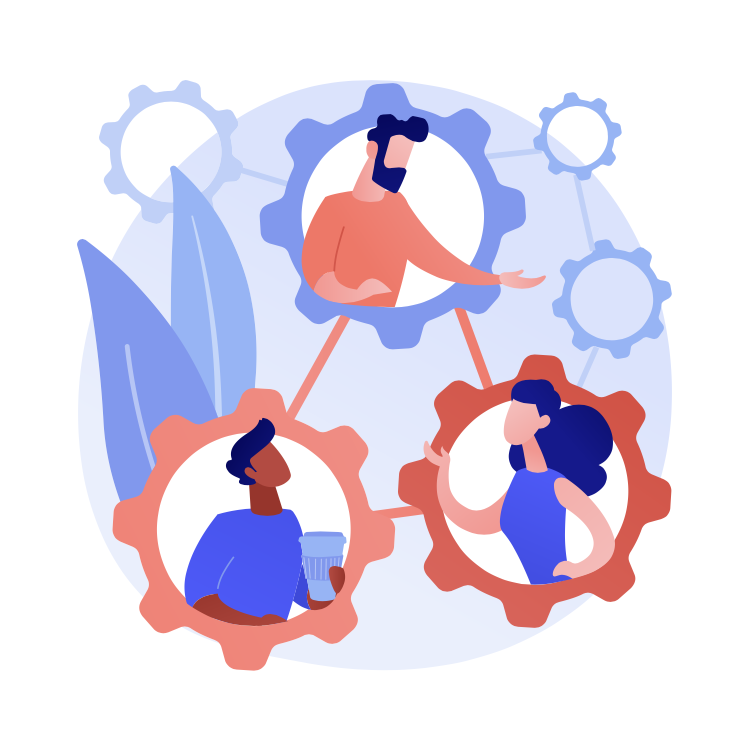Create the right infrastructure for employees to share ideas and drive innovation
From time immemorial, the power to drive growth and change has been reserved by the upper echelons of business. Transformational decisions have been made behind the closed doors of a ten-person boardroom. This is still a familiar narrative for some businesses, yet most organizations are now realizing that their biggest opportunities lie in the diverse and creative problem-solving capabilities of their people.
With ‘innovation’ one of the five essential skills for 2025, according to the World Economic Forum’s most recent Future of Jobs report, there is a real risk of organizations losing their competitive edge if they don’t build innovation into their long-term strategy. In many parts of the world, businesses face incredibly tough economic conditions in the wake of the pandemic – in the UK, it could be the worst recession in 300 years. Companies which are committed to empowering colleagues to participate in their innovation strategy, and create the infrastructure for them to do so, are more likely to keep pace today and thrive tomorrow.
The beating heart of your business
While top-down direction and guidance on strategic priorities will always be valuable in innovation, it’s only one part of the system. Bottom-up, employee-led innovation – involving the people who know your customers and their problems best, who are faced every day by the inefficiencies in how you work, and who, generally, really give a damn about doing things better – is the key to unlocking the biggest opportunities for your organization.
How can ‘inclusive innovation’ be achieved in practical terms? An obvious starting point is setting up innovation programmes in ways that remove barriers to participation, with a clear infrastructure. A central online hub for collaboration can provide structure, enabling colleagues to share their problem-solving ideas and get involved in innovation projects. This can enable the innovation agenda to shift from strategy to execution, while driving engagement and value for everyone in the workforce.
Once ideas are selected and evaluated, they can be taken through an incubation process and, if appropriate, scaled up with investment. Ideas can be big or small; internal improvements or customer-facing propositions. It might be a customer app for smoother order-processing, cloud-based data storage to tighten security, or a whole new product range or add-on service that will win new customers and drive growth.
Embed a culture of innovation
With a fully-supported framework and engaging infrastructure for innovation – including training, feedback and monitoring activities – an organization can begin to unlock meaningful value by prioritizing innovations in line with its immediate goals and longer-term strategy, and with the resources available.
Innovation goals may vary. Some businesses are seeking to give employees better opportunities for rapid problem-solving and collaboration around specific business challenges. Others are focused on discovering new commercial opportunities and strengthening their reputation as innovative businesses. Some are committing to turning their strategies and company purpose into action. At Pollen8 we’ve developed a SaaS (software as a service) platform and methodology for innovation which allows processes, people and tools to work together towards these goals, and we help organizations measure performance and optimize the system over time.
In one case, the British telecoms giant Vodafone sought to drive up innovation around its three purpose pillars: Inclusion for All, Planet, and Digital Society. It ran a global competition, Launchpad, to solicit ideas from employees. The innovation hub reached 3,000 innovators globally, and received over 1,000 submissions. From these, 25 ideas went through to incubation. Ultimately Vodafone succeeded in boosting engagement and turning the pillars into action, with ideas driven by employees located across 19 different countries.
Enterprise-wide buy-in
In our experience, communication plays a huge part in winning buy-in and inspiring participation from frontline teams. If the branding, messaging, storytelling and feedback around an innovation programme is managed well, it can really motivate individuals, instil more meaning in daily work, and empower people to excel.
We previously worked with multinational engineering firm GKN Aerospace, to invigorate innovation in line with their long-term commercial goals. The company has put in place a framework to surface new suggestions and bring internally-incubated ideas to fruition. This has led to the launch of a whole new part of the business, its electric aircraft department.
It is clear that employees at GKN thrive on this ‘innovation inclusivity’, and the company benefits from high levels of employee engagement and staff retention.
Maintaining momentum post-Covid
Covid-19 has proved to so many businesses that innovation can be delivered at speed when acute disruption obliterates the status quo. But there is a real danger that as normality gradually returns in 2021, this inventive, agile, inclusive mindset won’t be maintained in the long term. Companies risk reverting to the traditional processes that dominated ‘BC’ – Before Covid.
Another threat to inclusive innovation is allowing brilliant ideas to stagnate. Not taking action in a timely fashion can waste golden opportunities and disappoint colleagues. Leaders must be sure to stick to the plan, finish what gets started, and recognize the contribution of the people who drive ideas forward.
An inclusive mindset and accessible infrastructure are essential for effective innovation. By bringing people together and unlocking the power of participation, leaders can turn innovation into an organization-wide activity – and democratize the ability to drive change.

